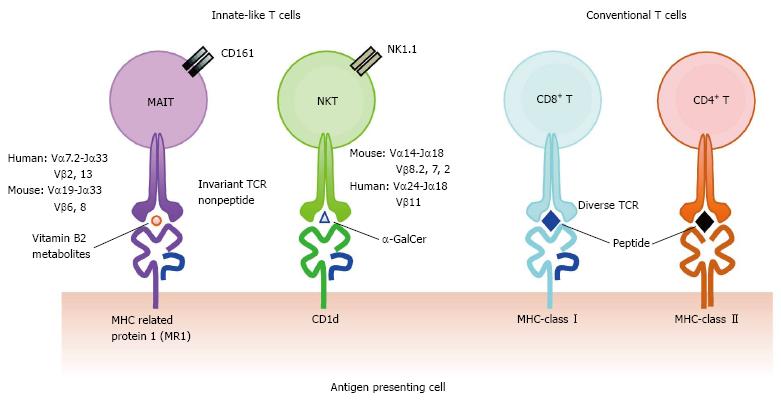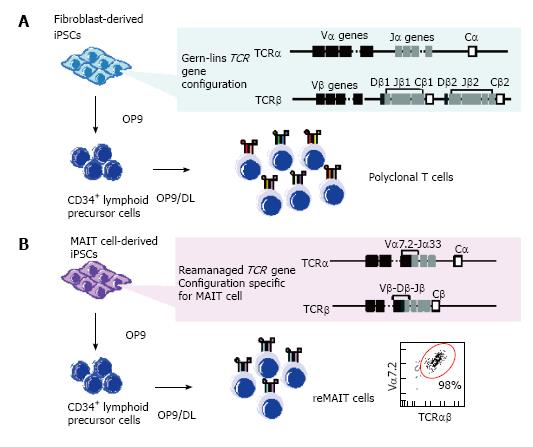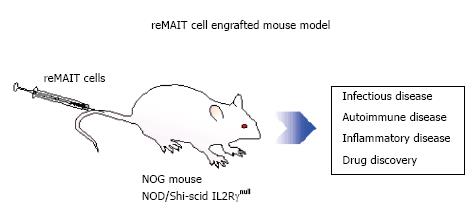Copyright
©The Author(s) 2016.
World J Stem Cells. Apr 26, 2016; 8(4): 158-169
Published online Apr 26, 2016. doi: 10.4252/wjsc.v8.i4.158
Published online Apr 26, 2016. doi: 10.4252/wjsc.v8.i4.158
Figure 1 Comparison of the T cell receptors and the antigen presenting molecules among αβ T cell subsets.
Invariant T cell subsets consist of mucosal-associated invariant T (MAIT) cells and natural killer T (NKT) cells expressing invariant TCRs. MAIT cells and NKT cells recognize vitamin B2 metabolites on MR1, and α-galactosylceramide (α-GalCer) on CD1d, respectively. In contrast, conventional CD8+ and CD4+ T cells possess divergent TCRs and recognize a variety of peptides on major histocompatibility complex-class I and class II, respectively. TCRs: T cell receptors; MHC: Major histocompatibility complex.
Figure 2 Scheme for T cell differentiation from induced pluripotent stem cells.
Induced pluripotent stem cells (iPSCs) derived from normal somatic cells such as fibroblasts possess the germline configuration at T cell receptor (TCR) loci, whereas those from T cells harbor rearranged configurations (A); Upon differentiation in the T-cell-permissive conditions, the resulting T cells possess diverse sets of TCR repertoires; polyclonal T cells. In contrast, mucosal-associated invariant T (MAIT) cells-derived iPSCs exclusively confer MAIT cells in the same differentiation conditions. Note that MAIT cell-derived iPSCs possess a rearranged Vα7.2-Jα-33 specific for MAIT cells in the genome (B).
Figure 3 Utility of mucosal-associated invariant T cells from induced pluripotent stem cells (redifferentiation of mucosal-associated invariant T cells) for modeling human diseases.
Severely immunocompromised mice received MAIT cells from induced pluripotent stem cells. reMAIT cells are useful for deciphering the physiological functions of MAIT cells in health and disease. MAIT: Mucosal-associated invariant T; reMAIT: Redifferentiation of MAIT.
- Citation: Sugimoto C, Fujita H, Wakao H. Mucosal-associated invariant T cells from induced pluripotent stem cells: A novel approach for modeling human diseases. World J Stem Cells 2016; 8(4): 158-169
- URL: https://www.wjgnet.com/1948-0210/full/v8/i4/158.htm
- DOI: https://dx.doi.org/10.4252/wjsc.v8.i4.158











